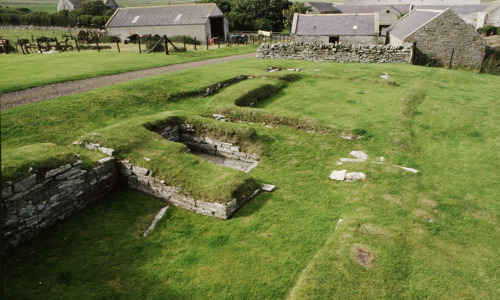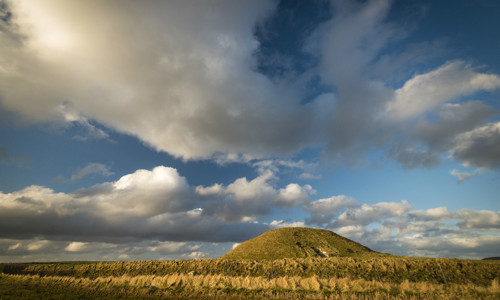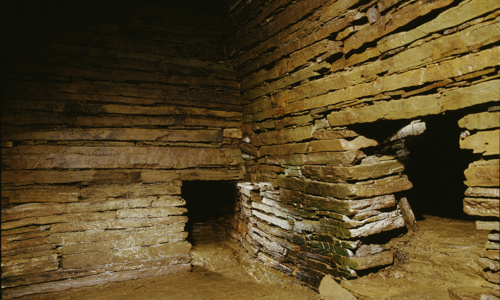History
Hackness Battery and Martello Tower were built in 1813–14, at the height of the Napoleonic Wars. French and American warships were wreaking havoc on British and Scandinavian merchant shipping by going ‘north about’, through the Pentland Firth or round Orkney. Longhope Sound provided a safe anchorage.
The battery at Hackness was built first, followed by two sister Martello towers: Hackness, just 200m from the battery, and Crockness, on the north side of the Sound.
There’s no record of the sites seeing enemy action before hostilities ended in 1815, however.
In 1866, the battery and towers were upgraded in response to a perceived threat from the American Fenian Brotherhood. The outdated guns were replaced, barracks improved and other structures added. These precautions also proved unnecessary.
By 1883, just two artillerymen were on duty.
The only record of the guns ever being fired is in 1892, during a day of gun drill and target practice for the Orkney Volunteer Artillery. The battery and towers were mere spectators during the two World Wars, even as the remarkable events in Scapa Flow unfolded.
The battery
The first battery contained:
- eight 24-pounder cannon mounted in V-formation on timber traversing carriages – to cover the entire width of the Sound
- a sloping parapet to aid the aim and firing of the cannon
- a soldiers’ barracks and store
- a powder magazine
In 1866, four 68-pounder guns, for firing through embrasures, replaced these eight cannon. The remodelling of the barracks created separate quarters for the non-commissioned officers (NCOs) and master gunner.
Other new buildings included a:
- guard house
- cookhouse
- ablutions and latrine blocks
Martello towers
Martello towers take their name from Mortella Point, Corsica. In 1794, the French mounted two small cannon on a circular masonry tower located here. Together they beat off an attack by two British warships with a combined firepower of 106 guns.
It so impressed the British that more than 100 similar towers were built along England’s south coast when Napoleon threatened to invade in 1803. Hackness and Crockness towers were built a decade later. Aside from another Martello tower guarding the port of Leith, these were the only ones built in Scotland.
Hackness Martello Tower had three floors:
- on the first floor was the entrance, reached by a wooden ladder, the barracks for 14 men and a cubicle for the NCO
- on the ground floor lay the powder magazine, stores and water cistern
- the top floor housed the gun – the first was a 24-pounder, but this was replaced in 1866 by a 68-pounder
The 1866 gun was removed around 1900, and the gun now on display is an Armstrong 64-pounder of a similar vintage.
















